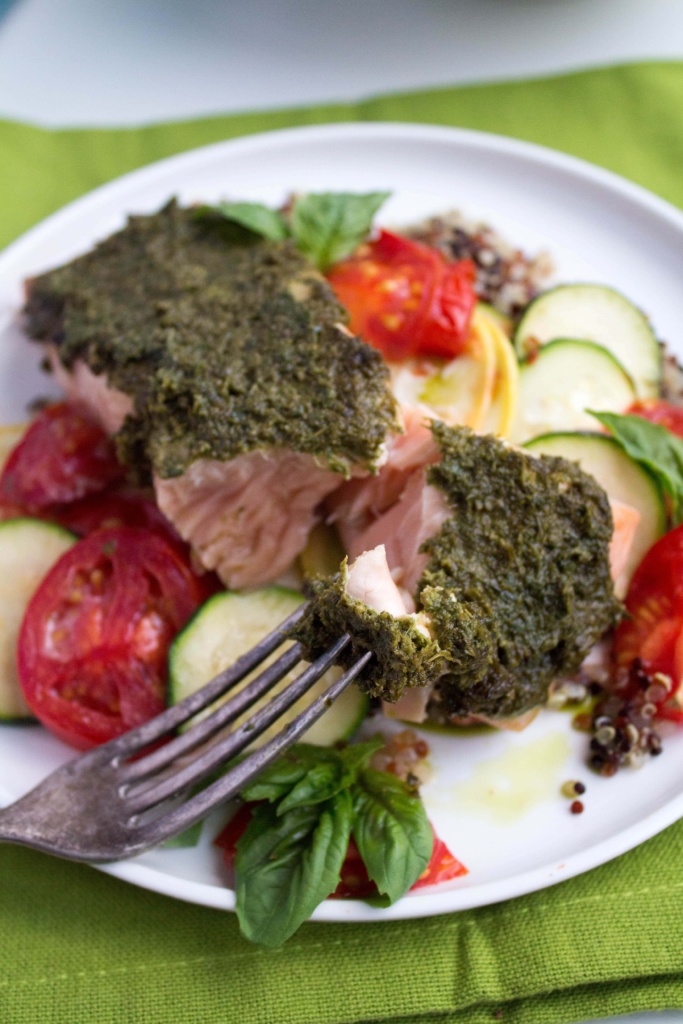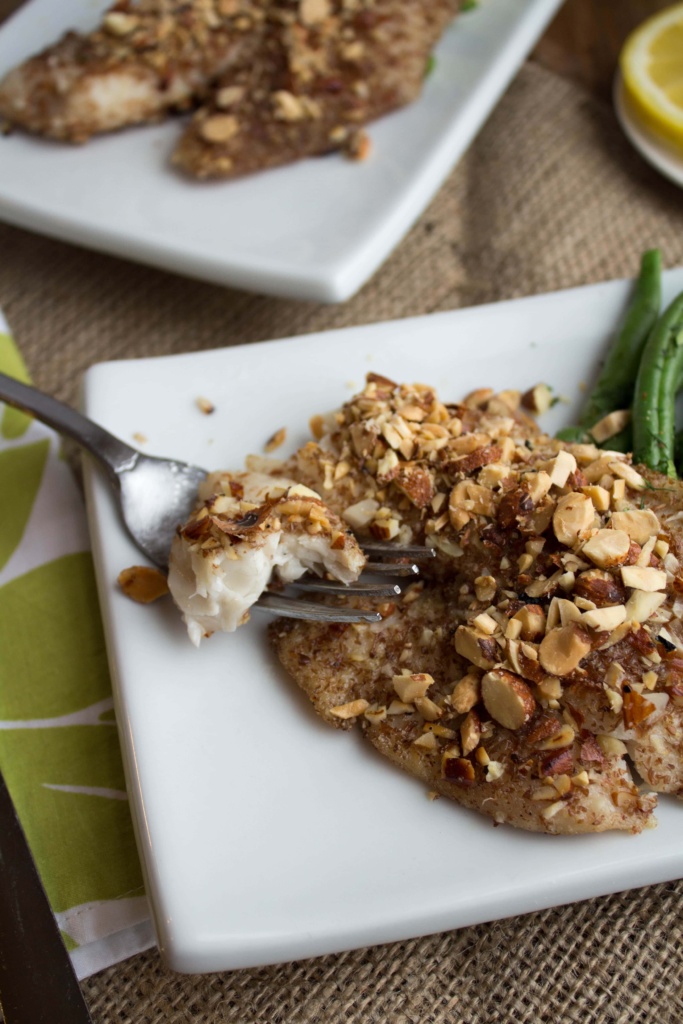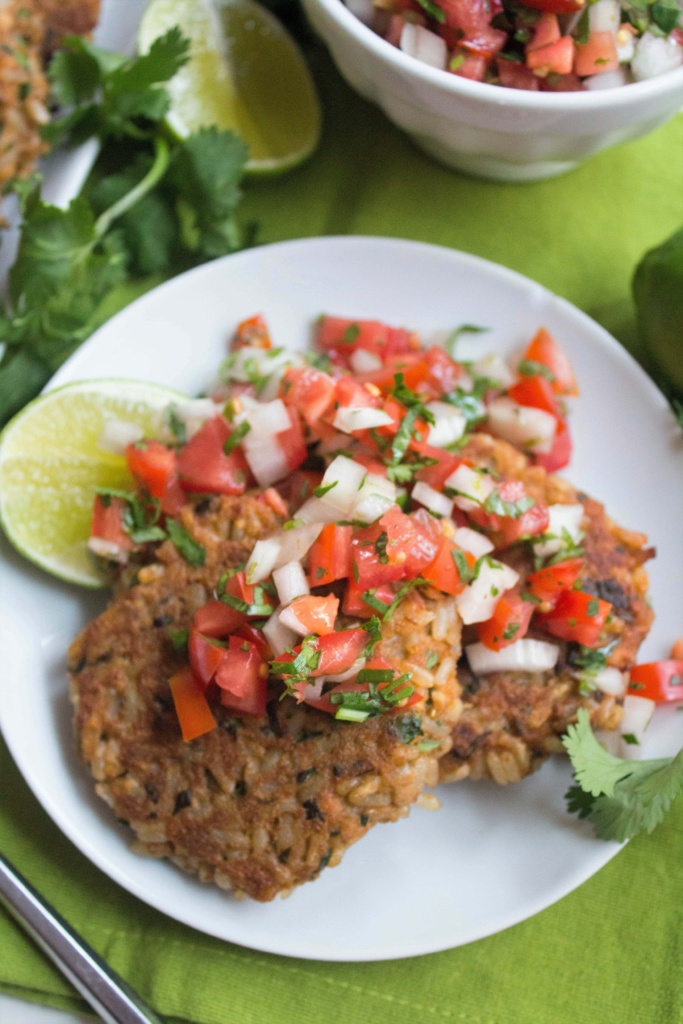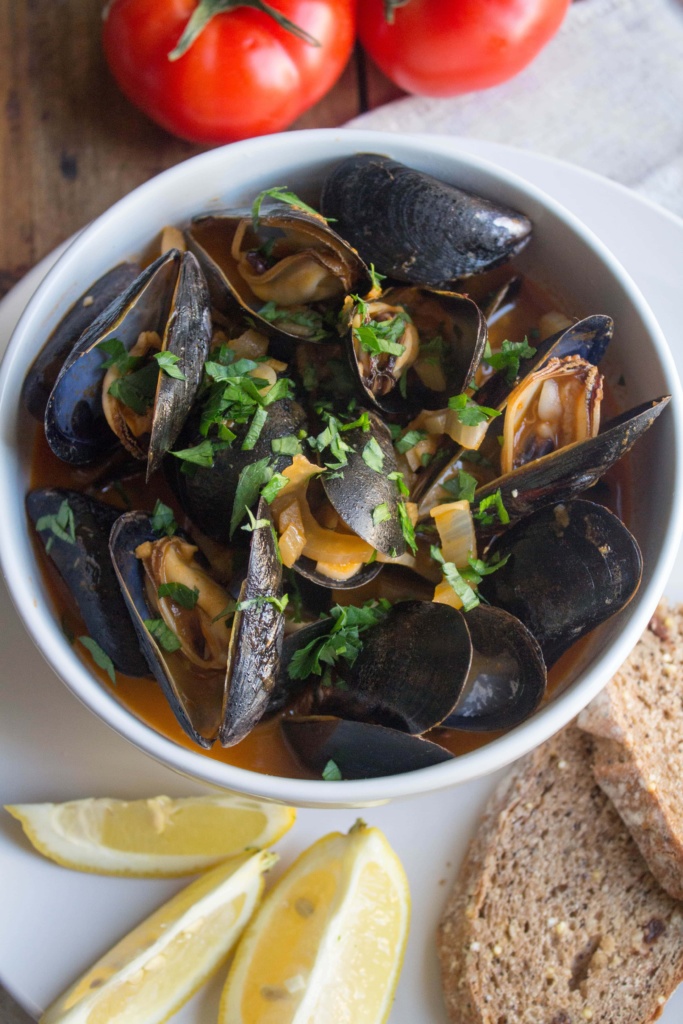As you guys already know, I am a huge fan of seafood. In addition to being extremely nutritious, fish can also make dinner really quick and easy, which is why I’m excited to be celebrating National Seafood Month this October through a partnership with Dish on Fish!
Dish on Fish is an initiative from the National Fisheries Institute to encourage Americans to eat more fish. As a dietitian (and a foodie!), I love this initiative, and the Dish on Fish blog (and their Twitter, FB, and Pinterest page) has tons of seafood recipes and useful health and nutrition information about seafood to get you started. See the end of this post for some of my favorite seafood recipes here on my blog, too!
Eating seafood, which includes fish and shellfish, at least two times per week (as recommended by the 2015-2020 US Dietary Guidelines for Americans) will reap plenty of nutritional benefits. Seafood is not only high in protein, but also a great source of healthy fats – particularly EPA and DHA Omega-3 fatty acids. The Dietary Guidelines’ recommendation to consume 8 or more ounces of a variety of seafood per week (for adults) provides an average of 250 mg per day of EPA and DHA – an intake amount that is associated with the many health benefits of omega-3’s.
The two active forms of Omega-3’s, EPA and DHA, support heart health and brain development. That’s why these healthy fats are important to the general population for reducing risk of cardiovascular disease (the leading cause of death in the United States) and also for pregnant and breastfeeding women to support infant brain development and other infant health outcomes. In fact, a 2014 report from the FDA stated that moms-to-be who eat two seafood meals (8 to 12 ounces) per week could provide their child with an additional 3.3 IQ points by age 9. Interesting! (Here’s a PDF one pager with more information on that study.)
Omega-3’s are also considered anti-inflammatory, which means that they can help reduce chronic inflammation when eaten consistently. This is good news because chronic inflammation is linked to many major diseases including cardiovascular disease, diabetes, cancer, arthritis, depression, and Alzheimer’s.
While Omega-3’s can be found in plant sources like flax seeds as well, the ALA form found in plants must first be converted to EPA and DHA (the kind of omega-3’s that are readily available and plentiful in seafood!). Ounce for ounce, seafood is by far the best dietary source of EPA and DHA Omega-3’s. Some of the best seafood sources of omega-3’s include salmon, canned albacore tuna, black cod, sardines, and anchovies.
In addition to the healthy fats provided by fish and shellfish, seafood is high in protein and rich in several vitamins and minerals that are important to consume. Shellfish in particular – think shrimp, clams, oysters, and mussels – is high in iron, vitamin B-12, copper, and zinc. Fish is also one of the few foods that is a natural source of vitamin D – a vitamin that most Americans are deficient in and is especially important for pregnant women to promote infant bone health.

To help with making a shift towards eating seafood two or more times a week, you’ll need an arsenal of delicious and easy seafood recipes to keep things interesting. Good thing seafood can be surprisingly quick, easy, and convenient to cook! Here are some of my favorite seafood recipes here on the blog.
Pesto Baked Salmon with Veggies
This is one of my favorite old recipes. It comes together in just 15 minutes and in one pan (with veggies included!) and is a delicious, colorful, and flavorful easy meal. Love salmon? Give my Salmon with Lemon Mustard Dill Sauce a shot too!
This crunchy, nutty fish recipe is an impressive crowd-pleaser that is actually super easy! Tilapia cooks quickly and is a mild tasting fish, so it’s a great intro for people who want to eat more fish but aren’t a fan of fishy flavor.
Healthier Tuna Noodle Casserole
This lightened up comfort food classic is packed with veggies, whole wheat pasta, and canned tuna, making it a balanced meal that is still reminiscent of the tuna casserole you grew up with.
Salmon Brown Rice Cakes with Fresh Salsa
These pan-fried salmon and brown rice cakes come together especially quickly thanks to pre-cooked salmon and brown rice. Canned or pouch salmon (or tuna) is a fantastic way to get all the health benefits of fish in an inexpensive and easy way. See also: my Healthy Tuna Salad recipe, which makes a great packed lunch!
This simple lemon and herb combination tastes great on numerous types of fish, fresh or frozen, so it is a great recipe to keep in your back pocket for a last-minute meal idea.
Mussels in Creamy Tomato Fennel Broth
If you’re intimidated by cooking shellfish, this is a great recipe to show you just how easy it is! The flavorful broth is simple, rich, and cozy – and all you need to do is toss in mussels (clams would be great too!), cook until the shells open up, and serve alongside some crusty bread.
How often do you eat fish/seafood? Do you cook it at home? If yes, what are your favorite recipes/ways to cook it?
This is a sponsored conversation written by me on behalf of National Fisheries Institute. The opinions and text are my own.
Why You Should Eat More Seafood originally appeared on fANNEtastic food | Registered Dietitian Blog | Recipes + Healthy Living + Fitness on October 26, 2016.
The post Why You Should Eat More Seafood appeared first on fANNEtastic food | Registered Dietitian Blog | Recipes + Healthy Living + Fitness.






